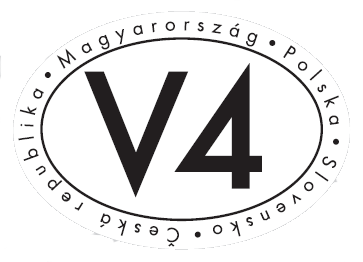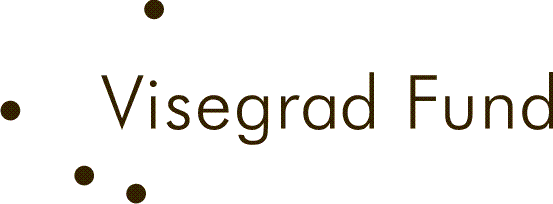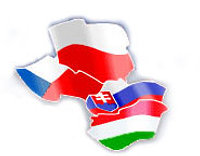Project Publications
| Book 1 | Book 2 | Book 3 | Book 4 | Book 5 | Book 6 | conference articles in journals |
Bartha, Z., & Gubik, A. S. (2014). The Outward Focused Development Path in the Visegrad Countries (chapter 3) In: D. Kiendl-Wendner & K. Wach K. (Eds.), International Competitiveness in Visegrad Countries: Macrto and Micro Perspective. Graz: Fachhochschule Joanneym (ISBN: 978-3-200-03673-4).
Full text: pdf (free download)
Abstract
The aim of this chapter is to describe how the macroeconomic development path taken by the Visegrad countries affects the internationalisation process of their domestic companies. The macroeconomic development paths are derived with the FOI model (focusing on the future, outside and inside potentials of the developed economies). The FOI-indices are calculated for all 34 OECD members, and then a factor and cluster analysis is conducted, with the help of which it is identified that the Visegrad countries have all chosen an outward focused development path. This development path involves the heavy reliance on outside resources, and forces the domestic firms to face tough international competition even in local markets. The outward focus of a country’s development strategy therefore should help local enterprises in becoming more competitive. Yet, this strategy usually result in a dual structure, where a good portion of the local businesses are characterised with a low level of competitiveness, and have very little chance of going international.
Keywords: development factors, FOI model, Visegrad countries
JEL classification: O11, O43, O57
References
Balogh, T. (1963). Unequal Partners 1-2. Oxford: Blackwell.
Barro, J.B. (1998). Determinants of Economic Growth: A Cross-Country Empirical Study. Cambridge, Massachusetts: MIT Press Books.
Bartha, Z., Gubik, S.A. & Tóthné Szita, K. (2013). Intézményi megoldások, fejlődési modellek (Institutional solutions, development models). Miskolc: GNR Szolgáltató és Kereskedelmi Bt.
Bhagwati, J. (1958). Immiserizing Growth: A Geometrical Note. The Review of Economic Studies, 25(3), 201-205.
Boeke, J.H. (1953). Economics and Economic Policy of Dual Societies. New York: Institute of Pacific Relations.
Coase, R.H. (1937). The Nature of the Firm. Economica 4(16), 386-405.
Domar, E. (1947). Expansion and Employment. American Economic Review, 37(1), 343-355.
Emmanuel, A. (1972). Unequal Exchange: A Study of the Imperialism of Trade. New York: Monthly Review Press.
Japan. London: Pinter Publishers.
Furtado, C. (1970). Economic Development of Latin America. London: Cambridge University Press.
Hamilton, A (1791). Report to Congress on Manufactures. Philadelphia. http://memory. loc.gov/cgi-bin/ampage?collId=llsp&fileName=009/llsp009.db&Page=123
Harrod, R.F. (1948). Towards a Dynamic Economics. London: MacMillan.
Hodgson, M.H. (2006). What Are Institutions? Journal of Economic Issues, 40(1), 1-25.
Keynes, J.M. (1936). The General Theory of Employment, Interest and Money. London: MacMillan.
Krueger, A.O. (1974). The political economy of the rent seeking society. The American Economic Review, 64(3), 291-303.
List, F. (1841). Das Nationale System der Politischen Ökonomie. Stuttgart: Cotta'schen Verlag. Lucas, R.E. (1988). On the Mechanics of Economic Development. Journal of Monetary Economics, 22(1), 3-42.
Marshall, A. (1890). Principles of Economics (First Edition ed.). London: Macmillan.
McClelland, D.C. (1957). Community development and the nature of human motivation. Cambridge: Harvard University Press.
Meier, G.M. (1964). Leading Issues in Economic Development. New York: Oxford University Press.
Myrdal, G. (1957). Economic Theory and Underdeveloped Regions. London: Gerald Duckworth.
North, D.C. (1993). Institutions, institutional change and economic performance. Cambridge: Cambridge University Press.
Porter, M.E. (1990). The Competitive Advantage of Nations. Harvard Business Review, 68(2), 73-91.
Prebisch, R. (1964). Towards a new trade policy for development. New York: United Nations.
Ricardo, D. (1817). On the Principles of Political Economy and Taxation. London: John Murray.
Romer, P. (1986). Increasing Return and Long Run Growth. Journal of Political Economy, 94(5), 1002-1037.
Schumpeter, J.A. (1934). The Theory of Economic Development: An Inquiry Into Profits, Capital, Credit, Interest, and the Business Cycle. Cambridge: Harvard University Press.
Simon, H.A. (1957). Models of Man. New York: Wiley.
Singer, H.W. (1964). International Development: Growth and Change. New York: McGraw-Hill.
Smith, A. (1776). Enquiry into the Nature and Causes of the Wealth of Nations. Edinburgh: J. R. McCulloch.
Solow, R. (1956). A Contribution to the Theory of Economic Growth. Quarterly Journal of Economics, 70(1), 65-94.
Szentes, T. (2011). Fejlődés-gazdaságtan (Development economics). Budapest: Akadémiai Kiadó.
Tullock, G. (1967). The Welfare Costs of Tariffs, Monopolies and Theft. Western Economic Journal, 5(3), 224-232.
Tullock, G. (1993). Rent Seeking. Brookfield: Edward Elgar Publishing.
Varga, B., & Szilágyi, R. (2011). Kvantitatív információképzési technikák. Budapest: Nemzeti Tankönyvkiadó.
Veblen, T. (1919). The Place of Science in Modern Civilization. B. W. Huensch, New York.
Wallerstein, I. (1974). The Modern World System: Capitalist Agriculture and the Origins of the European World Economy in the Sixteenth Century. New York: Academic Press.
Williamson, O.E. (1998). Transaction Cost Economics: How It Works; Where It Is Headed. De Economist, 146(1), 23-58.
Williamson, O.E. (2000). The New Institutional Economics: Taking Stock, Looking Ahead. Journal of Economic Literature, 38(3), 595-613.
Czech Republic
Hungary
Poland
Slovakia

Contact:
Dr hab. Krzysztof Wach
Cracow University of Economics
wachk@uek.krakow.pl
www.wach.uek.krakow.pl

